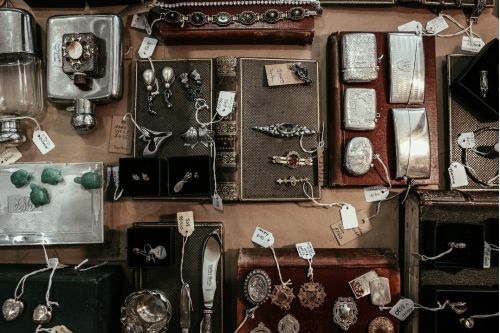Antique shopping is not just a hobby or a pastime; it’s an art form. For many, it’s the thrill of discovering pieces that tell stories from the past, items that have stood the test of time and carry with them a unique charm and character.
Yet, finding hidden gems in the world of antiques requires patience, knowledge, and a keen eye. Whether you’re a seasoned collector or a novice looking to start your antique journey, these tips and tricks will help you master the art of antique shopping.
Read on to learn more!
Table of Contents
Research and Educate Yourself
One of the most crucial steps in becoming a successful antique shopper is to educate yourself about different types of antiques, their history, and their value.
Learn the History
Understanding the historical context of items will give you an edge in identifying genuine antiques. Books, online resources, and antique shows are great ways to educate yourself.
Recognize Marks and Signatures
Many valuable antiques have maker’s marks or signatures. Familiarize yourself with these indicators as they can significantly impact the value of an item.
Study Trends
Antiques’ popularity can fluctuate. Keeping an eye on market trends will help you make informed decisions about potential investments.
One fascinating area of vintage collections is porcelain from Qing Dynasty. The pieces from this era represent significant cultural and artistic achievements, reflecting the skilled techniques and artistic aspirations of the time.
Tips and Tricks for Finding Hidden Gems
Now that you have a basic understanding of antiques let’s dive into practical tips and tricks for finding hidden gems.
Explore Local Antique Shops and Markets
The local antique marketplace is treasure troves for unique finds. Take time to visit these places regularly, as new items are always coming in.
Attend Auctions and Estate Sales
Auctions and estate sales are excellent opportunities to find rare pieces at a bargain. However, be prepared to bid against other buyers, so it’s essential to have a budget in mind.
Consider the Condition of the Item
Sometimes an antique may have minor damages or imperfections, but this doesn’t mean it’s not valuable. Consider the overall condition of the item and if you’re willing to repair or restore any issues.
Ask Questions and Negotiate
When shopping for antiques, don’t be afraid to ask questions about an item’s history, authenticity, or value. It’s also common practice to negotiate prices with sellers, so don’t hesitate to make an offer.
Caring for Your Antiques
Once you’ve found a hidden gem, it’s essential to take proper care of it to maintain its value and beauty.
Clean with Caution
Be careful when cleaning antiques as harsh chemicals or abrasives can damage the item. Research safe cleaning methods for different types of materials.
Store in a Suitable Environment
Antiques should be stored in a climate-controlled environment to prevent damage from humidity, temperature changes, and pests. Consider investing in proper storage options.
Consider Insurance
If your collection has valuable antiques, consider insuring them to protect against potential damages or loss.
Understanding the Art of Antique Shopping
Antique shopping is a rewarding experience that combines the thrill of the hunt with the joy of discovering pieces of history. By educating yourself, honing your negotiation skills, and practicing patience, you’ll be well on your way to finding hidden gems that add character and charm to your collection. Remember, each antique has a story to tell, and as an antique hunter, you become a part of that narrative.
For more tips and insights into the world of antiques, follow us on our site today!



